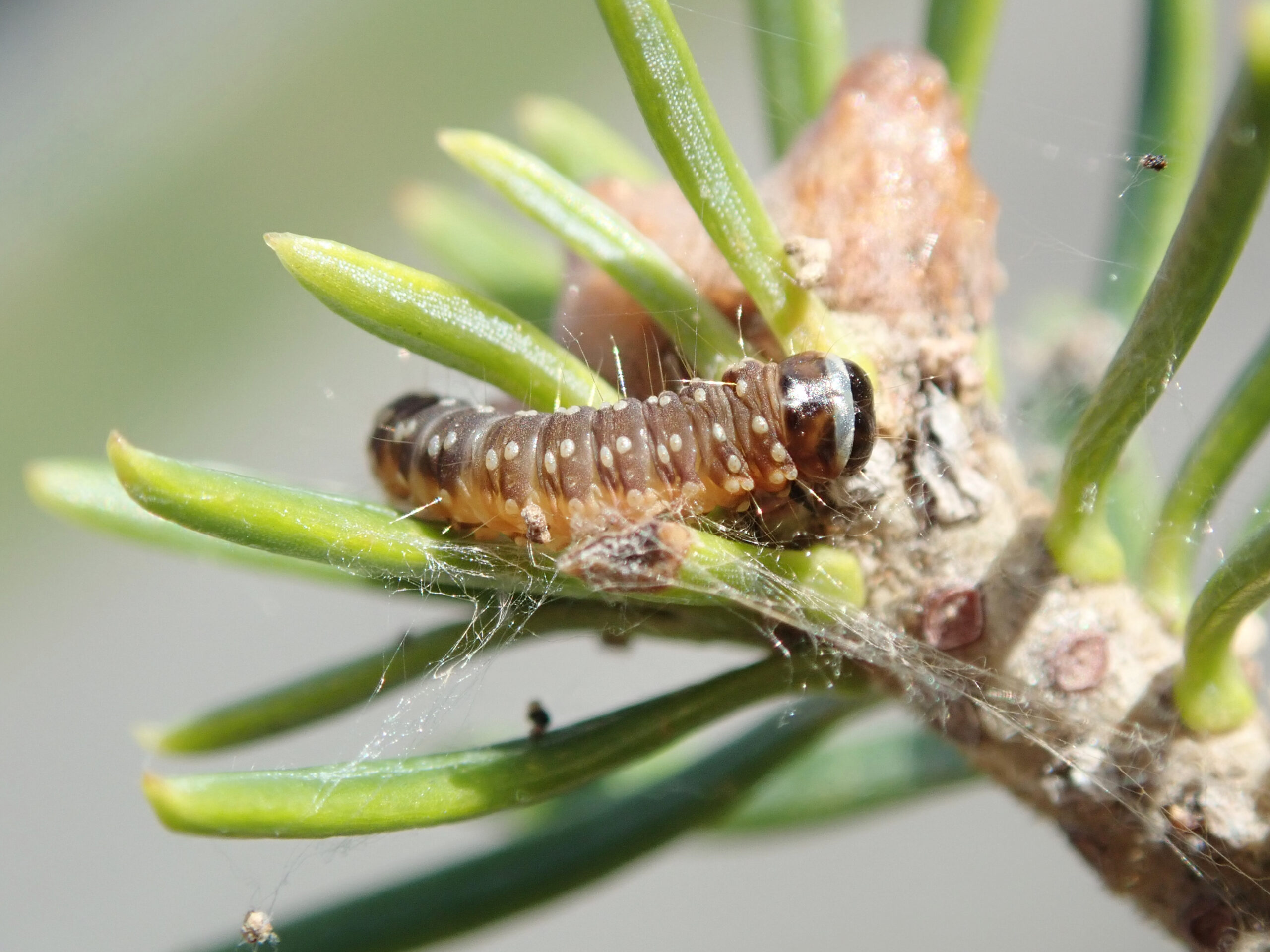When caterpillars with blue and yellow markings started crawling in central and northern Aroostook this spring, people braced themselves.
The return of forest tent caterpillars led many to recall outbreaks of 40 years ago that were so bad road crews had to sand because of the slippery carcasses.
This year turned out to be a stellar year for the caterpillars, which devoured more than 60,000 acres of aspen, poplar and maple leaves, mostly in Aroostook. But another dreaded forest pest also made a comeback: spruce budworm, a plague for Maine’s forests, which damaged about 3,500 acres of trees this year.
Trees can handle two or three years of defoliation from both insects, but after that they can die. In heavily forested Maine, dying trees are devastating. The forestry industry employs more than 13,000 people and contributes nearly $6 billion to the state’s economy, according to the Maine International Trade Center.
The insects explode in cycles, and both are on the rise, state experts said. Forest tent caterpillars were especially prolific.
“It’s been a while since we’ve seen an outbreak this large,” said Allison Kanoti, state entomologist with the Maine Department of Agriculture, Conservation and Forestry. “We had about 60,000 acres mapped this summer of defoliation damage from small plane views. That is roughly twice the amount as was mapped last year.”

Forest tent caterpillars are one of Maine’s many species that has eruptive populations — meaning they maintain at low numbers for a while and then suddenly skyrocket, she said.
From about 1983 until a couple of years ago, state aerial surveys spotted smaller outbreaks of around 1,000 acres of damage, she said.
More caterpillars could affect another industry: maple production. Though the larvae usually prefer aspen types of trees, in some areas of New England, including this year in Somerset County, they favor sugar maple.
“It could affect the sap run,” Kanoti said. “There are some reports that it can lower sap volume and sugar levels.”
Leaves can grow back in the same season, and most areas affected saw leaves regrow this year, she said. That can happen for about two years. But a third year of defoliation can affect the trees negatively, especially aspen, Kanoti said.
Whether leaves grow back depends on other conditions, too. If there’s severe defoliation and then a period of drought, for instance, the tree won’t respond as well.

The caterpillars started building up around 2021 and, in 2022, damaged about 17,000 acres in The County, said Jim Dill, pest management specialist with the University of Maine Cooperative Extension.
“[They] increased to just over 30,000 acres in 2023. The forest tent caterpillar outbreaks last about five years, so we are in year three or four,” he said. “However, they usually collapse due to weather and pathogens especially when the pest outbreak is high, like now. So it could be anyone’s guess for 2025, but hopefully, it will collapse.”
Spruce budworm may be another story. This year saw quite a bit more damage than in recent years, Dill said.
The insects historically cycle every 30 to 60 years, so a resurgence is possible anytime, he said. While this year’s numbers may not mean a resurgence is imminent, they are higher than they have been.
In 2021, about 850 acres were damaged, but that decreased to essentially zero in 2022, Dill said. This year’s 3,500 acres show growth.
Like the forest tent caterpillar, spruce budworm is a species native to Maine. In the historic outbreak of the 1970s and early 1980s, the insects decimated nearly 136 million acres of spruce and fir in Maine and eastern Canada. The fight against them involved a fleet of former World War II planes, retrofitted for insecticide spraying, that was based in Presque Isle.
The worms generally like balsam fir and white spruce, but can also eat other spruce, tamarack, hemlock and fir trees, according to the Maine Forest Service.
Damage this year was concentrated in northwestern Aroostook County, near forests affected in Quebec, where there’s been an ongoing outbreak, Kanoti said.

The 1970s outbreak was historic, and the next one will likely not be as severe, she said. Different forest composition and better tools are in play, and experts have been keeping watch.
“It is something we’ve been taking a closer look at over the last 10 years,” she said. “We have a bunch of cooperators, including the Maine Forest Service, who are collecting samples to look at larval populations.”
Maine forests now contain less of the ideal fir type and forest conditions for the insect, as opposed to when the last outbreak erupted, Kanoti said.
Going forward, landowners and experts are trying to reduce mature fir stands the worms favor. Targeted biological pesticides are available to kill only budworms but preserve other insects, which Maine will likely use whenever a new outbreak occurs, she said.
Ironically, Maine’s warming climate may help.
“We expect that budworm populations will be impacted by warmer temperatures over fall and winter,” Kanoti said. “When temperatures are slightly warmer, their metabolism is slightly faster, and fewer of them survive.”








